Peacocks are very adventurous eaters who enjoy almost any food you offer them. But maintaining a specific diet may help them maintain peak health and high energy levels.
If you have been wondering about the perfect grains to feed your peacock, look no further. This article will discuss 9 different grains that are not only nutritious but a delicious part of your peacocks’ diet.
| Grain | Health Benefits |
| Wheat | High in fiber, contains folate, vitamin B and may decrease the risks of heart disease. |
| Corn | Rich in vitamin C, may improve eye health, protect cells against damage, and may lower the risk of heart disease. |
| Beans | High in protein, includes folate, may reduce chances of various cancers, and contains many antioxidants. |
| Rice | May support glycogen levels, ease the digestive system and is a great grain for weight loss. |
| Quinoa | Rich in fiber, minerals, antioxidants, and contains all nine essential amino acids for health maintenance. |
| Barley | Rich in vitamins and minerals, easy on the digestive system, and may reduce hunger. |
| Oats | Provides antioxidants, promotes a healthy gut, may lower blood sugar, and aid in weight loss. |
| Rye | Rich in fiber, may improve the function of the digestive system, may lower cholesterol, and contains many antioxidants. |
| Millet | Regulates blood levels, is good for the heart, aids in digestion, and may battle certain cancer cells. |
Table of Contents
Wheat
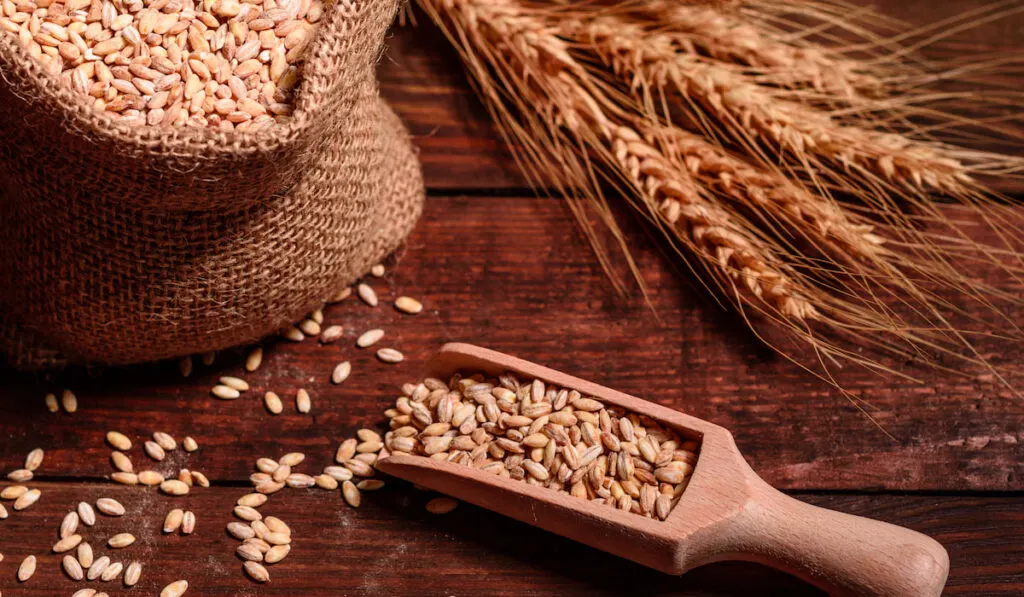
Wheat was first discovered in what is known today as southeastern Turkey. Wheat was first used in the 18th century for a variety of breads, pastas, and even some pastry dishes.
Wheat today is used for similar products and is found across the world, maybe even in some backyards.
Peacocks enjoy wheat as it has both a sweet and bitter taste. In addition to the lovely taste, wheat is a suitable source of fiber, high in nutrients, and may decrease the risk of heart disease.
Corn
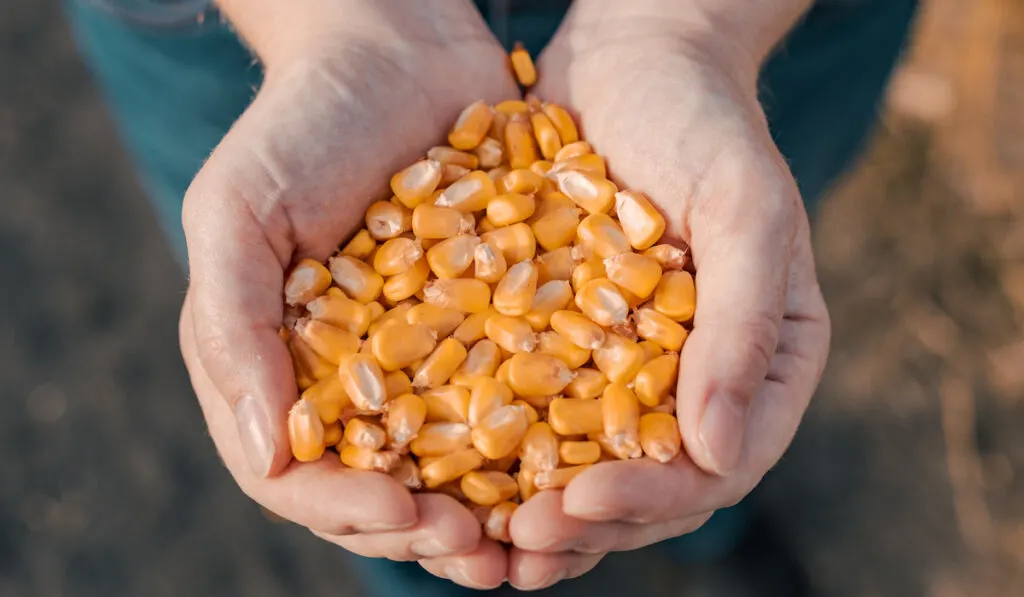
Corn first originated in southern Mexico. Corn was first found as a food source, often mixed with various grasses and grains as a delicacy for the native people of Mexico around 10,000 years ago.
Corn today is grown across the world and is popular in many dishes. It is widely enjoyed by both people and animals!
Peacocks enjoy corn as part of their diet because of its fresh taste. Corn also offers many health benefits, including a high vitamin C content, possible protection against certain cancer cells, and aids in eye health.
Beans
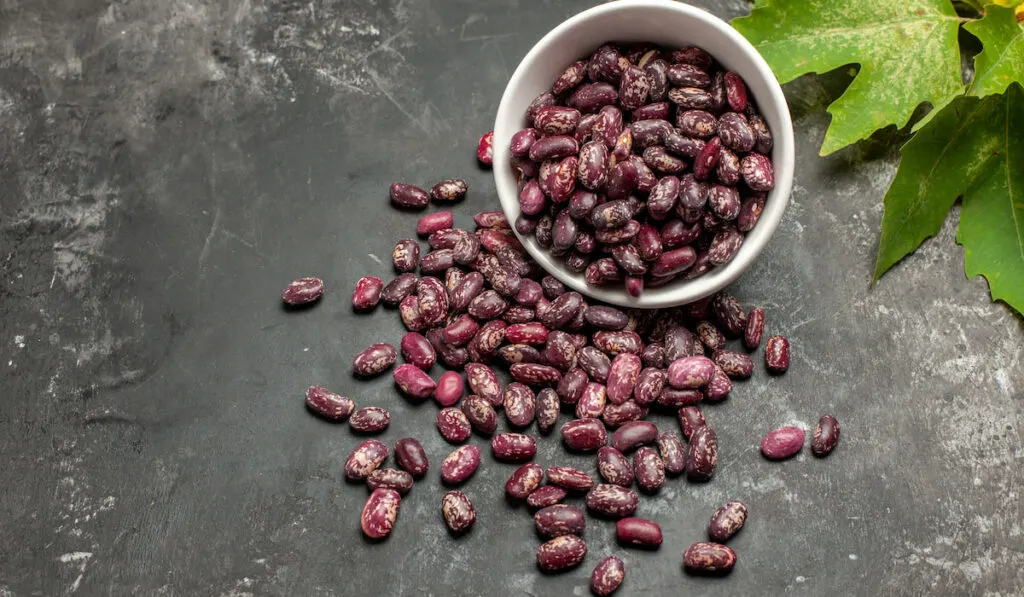
Beans come in a variety of sizes, shapes, colors, and tastes. First originating in Central and South America, beans originally were used for food and in some cultures as a way to depart with souls in the afterlife.
Beans grow on vines and are now found across the world.
Peacocks enjoy beans; they come in a variety of flavors that compliment your peacock’s diet and taste palette. Beans have many health benefits including protein, fiber, iron, and a variety of antioxidants that help a peacock sustain proper health and energy levels.
Rice
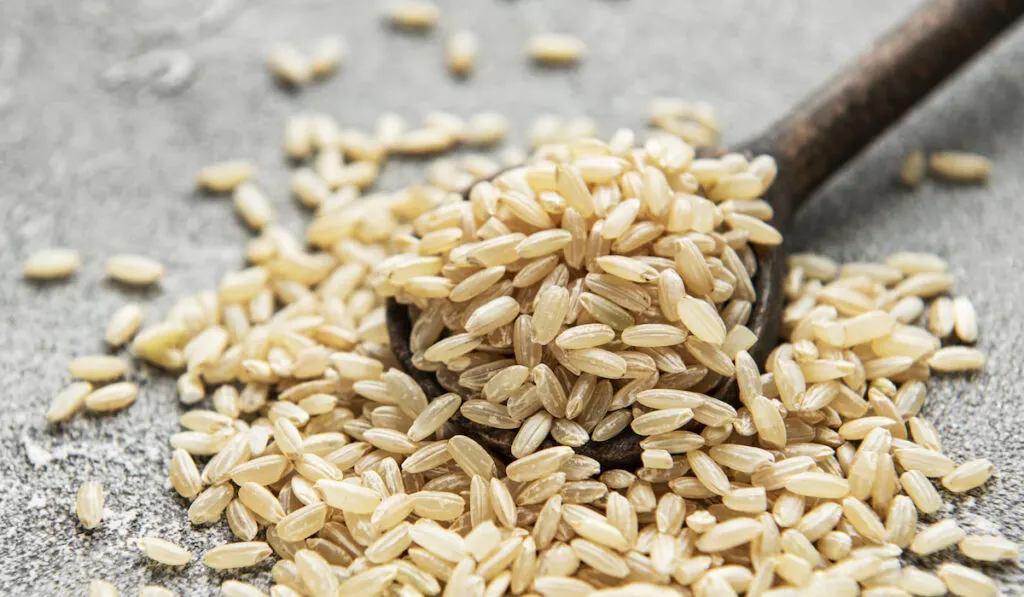
Rice comes in a variety of flavors, sizes, and colors. It was first discovered in China over 10,000 years ago. Rice is popular in many dishes across the world and is enjoyed by not only humans but animals as well!
Peacocks enjoy rice for its tasty flavor and small size. Rice may be given in addition to any dish that is part of your peacock’s diet. This grain can supply various health benefits including being easy on the digestive system, aiding in weight loss, and even contains high amounts of fiber for healthy digestion.
When preparing rice for your peacock, be sure it is fully cooked and given in small amounts to avoid overeating and to ensure optimal health.
Quinoa
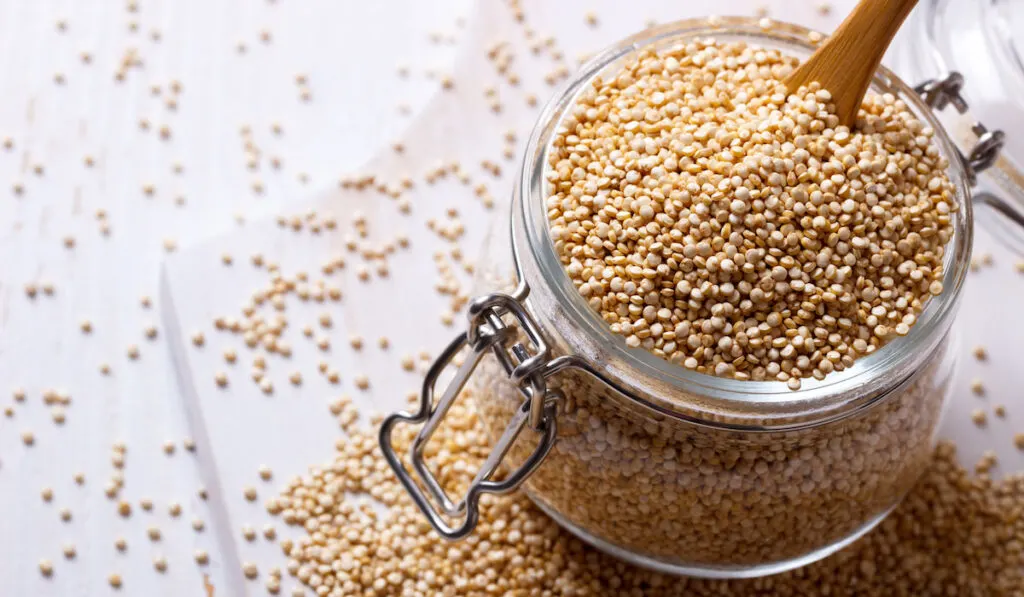
Quinoa first originated in Peru. This superfood was originally made for the consumption of livestock in many countries. Today, quinoa is a worldwide favorite in many dishes and is popular among the vegetarian and vegan communities.
Quinoa is a very nutritious food made from a weed-like plant called “grass foot,” which acts as a whole grain. This grain is able to be mixed with an abundance of fruits, vegetables, and other grains.
This food is great for peacocks as it is a suitable protein supplement and is accompanied by many benefits including being gluten-free, protein-filled, high in fiber, and small enough to add to any diet!
Barley

Barley first originated in northeast Africa, growing commonly in water-filled areas. Barley is a grain that was originally used for the production of bread and beer. Today, barley is used in many dishes and is enjoyed around the world.
Peacocks love a variety of grains, including barley. This grain has a slightly nutty flavor and a soft and chewy texture. Peacocks like this aspect as it is a good flavor provider along with being accompanied by numerous health benefits.
Some of these health benefits include being high in fiber which may reduce constipation, help regulate blood pressure, and even balance cholesterol levels.
Oats
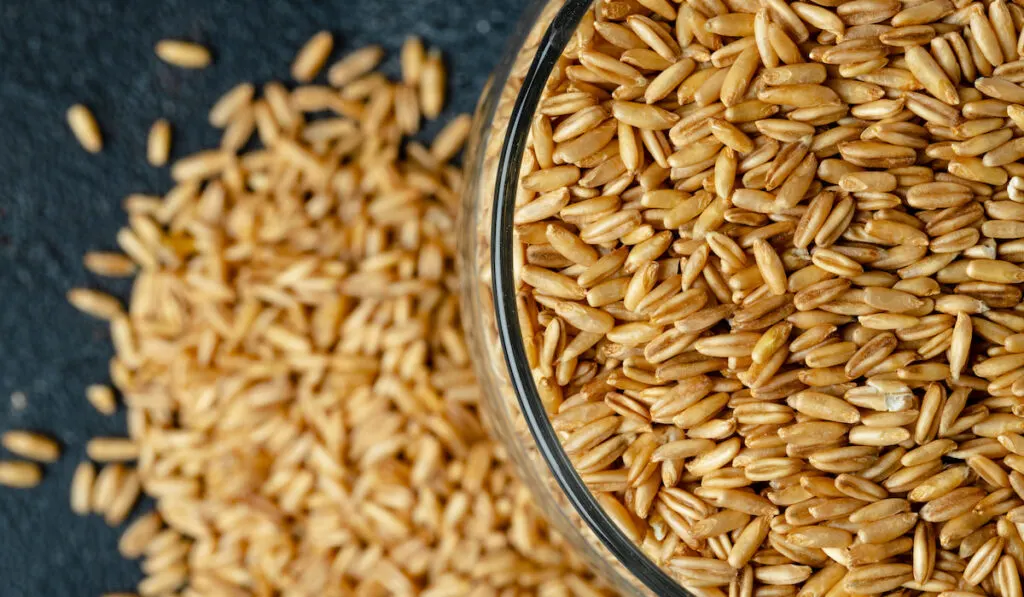
Oats first originated in Asia and quickly spread throughout Europe hundreds of years ago. This grain is now found across the world and is popular in many cultures and dishes. Oats are small and packed full of nutrients and vitamins to contribute to one’s health.
Peacocks enjoy eating oats as they are small and light, tasty enough to be used as a treat, and possess many health benefits.
Some of these benefits include providing antioxidants, which may reduce blood pressure, and high fiber which may ease constipation.
Rye
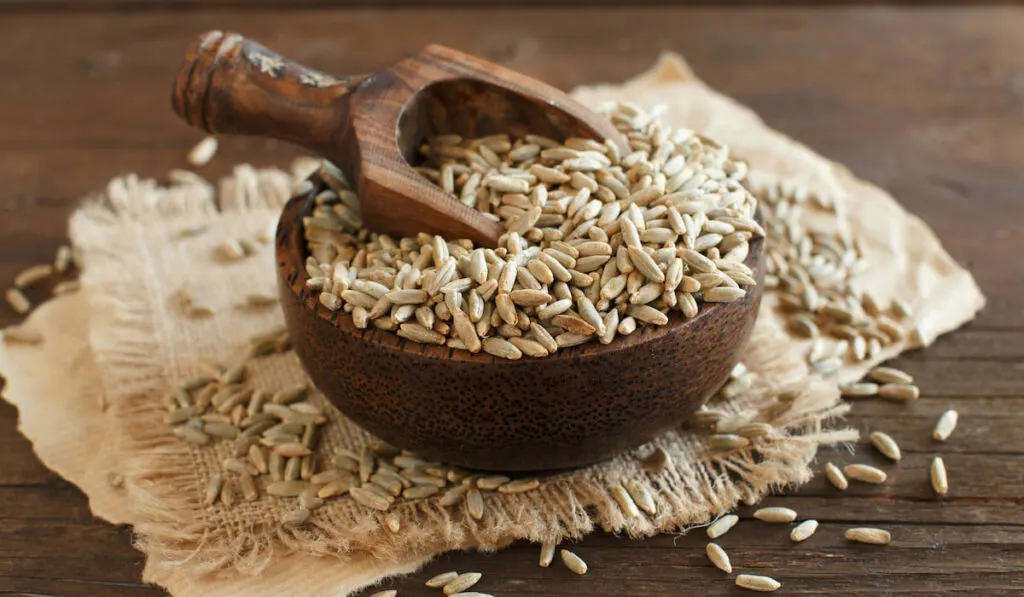
Rye first originated in Southwestern Asia. This grain quickly spread through Europe, Asia, and North America, and today is found across the world. Rye was originally used as a starvation food when famines struck.
Peacocks enjoy rye as it has spicy, grainy, and sharp notes of flavor. This flavor includes a starchy texture.
Rye is a great source of fiber that peacocks enjoy as part of their diet, which aligns with its health benefits including being rich in minerals and vitamins as well as many antioxidants, and the potential to improve the function of the digestive system.
Millet
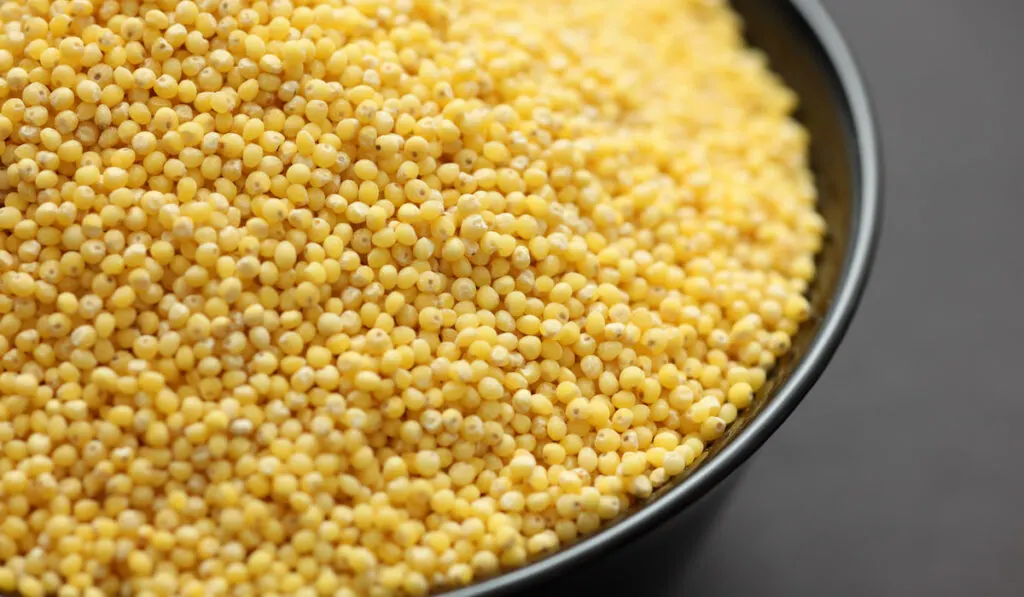
Millet first originated in southeast Asia. Millet was originally used for the production of hay. Today this grain is used in the mass production of beer, bread, and various culinary dishes.
Millet, although a lesser-known grain, may be described as having a mild corn-tasting flavor with a petite and round texture; as a sweeter grain.
Peacocks often enjoy millet due to its sweet taste and small size that keeps them actively pecking and busy.
Millet is accompanied by an abundance of health benefits including the promotion of digestion, which may regulate glucose levels, be good for the heart, and may protect against certain cancers.
Fun fruits that peacocks enjoy eating
In addition to grains, peacocks may also enjoy various fruits and veggies included in their diet. Below is a fun addition of five healthy and yummy fruits that your peacock may enjoy eating!
| Fruits | Health Benefits |
| Grapes | Good source of minerals, potassium, and vitamins. May protect against certain cancers and cardiovascular disease. |
| Raspberries | Aids in heart function, provides potassium, and has been proven to lower blood pressure over time. |
| Huckleberries | May aid in the lowering of cholesterol, protect against heart diseases, and eye diseases. |
| Blackberries | Packed with vitamin C, and K. High in fiber, boosts brain function and oral health. |
| Peaches | Antioxidants, a good source of vitamin C, and builds resistance to infection and certain cancers. |
Grapes
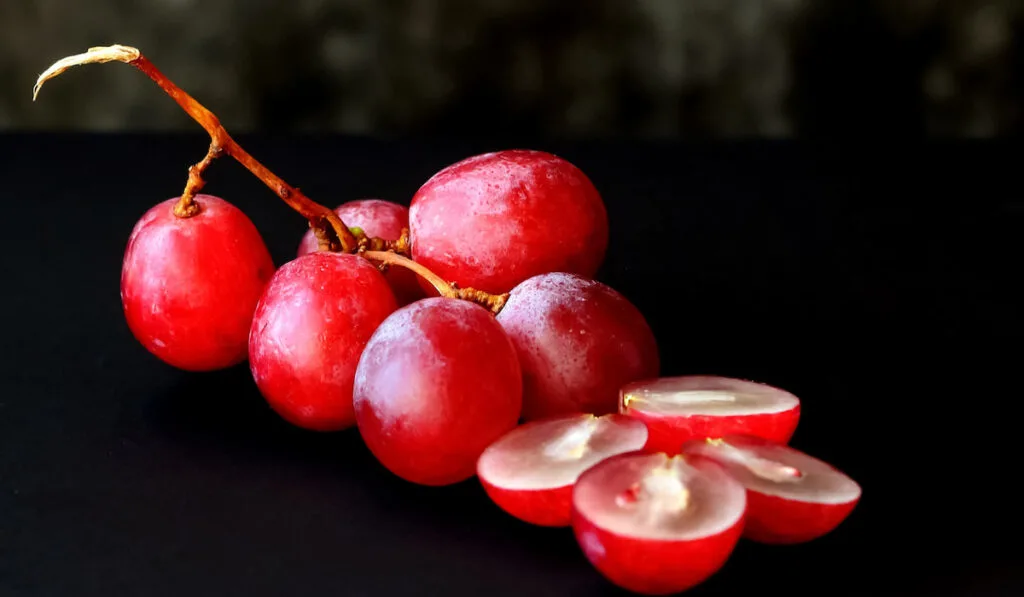
Grapes come in a variety of colors, sizes, and flavors; most commonly green and red. Grapes first originated in both Egypt and Syria. These colorful fruits grow across the United States and are commonly found across the world.
Peacocks often enjoy grapes as they are easy to eat, juicy, and filled with an abundance of flavor. Similar to raspberries, peacocks may also enjoy the small bugs that surround the fruit.
In addition, grapes are accompanied by many health benefits such as the potential to protect against certain cancers, high fiber, and potassium.
Raspberries
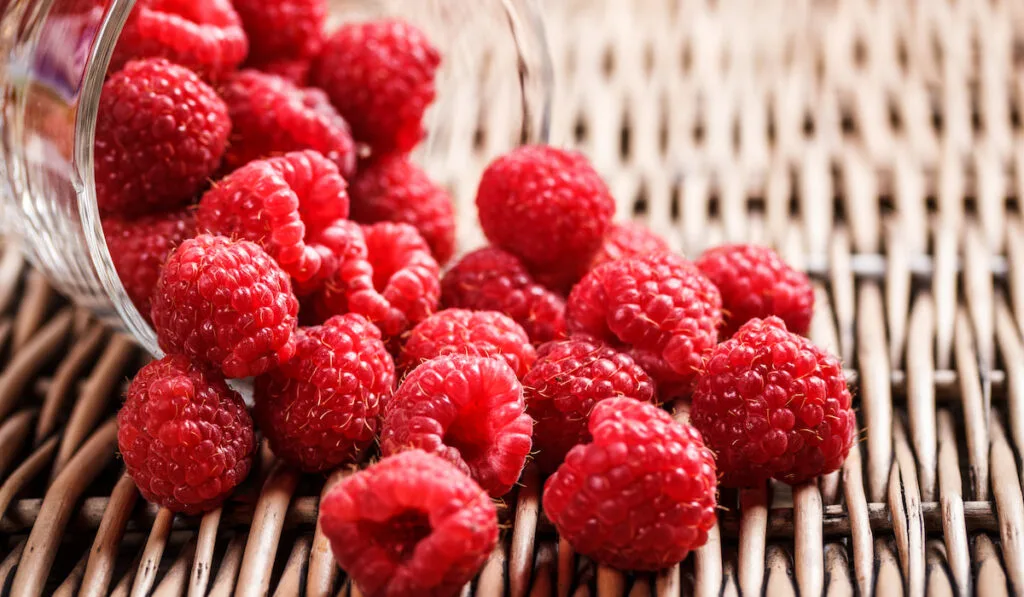
Raspberries first originated in both Asia Minor and North America. These berries were often used for a variety of things including, medicines, paints, and cooking. Today these berries are found across the world and are popular in many homes.
Peacocks enjoy the taste of raspberries as they are sweet and tangy. They enjoy the sweet taste and even the tiny bugs that may accompany the berries.
Overall these fresh fruits should be fed to your peacock in moderation for a burst of fresh flavor and excellent health benefits, including the added strength in bone and skin health, the regulation of blood pressure, and high amounts of potassium.
Huckleberries
Huckleberries were originally found in the Eastern and Southeastern United States. These berries were often used as a way to treat infections and illnesses many years ago. Today, huckleberries are found in forests in the United States.
Peacocks may enjoy huckleberries as they have a tart and sweet flavor. These berries are able to be integrated into any diet and provide great color and taste to your peacocks’ meals.
Huckleberries, similar to blackberries and contain many health benefits include fiber, vitamin C, and promoting skin and eye health.
Blackberries
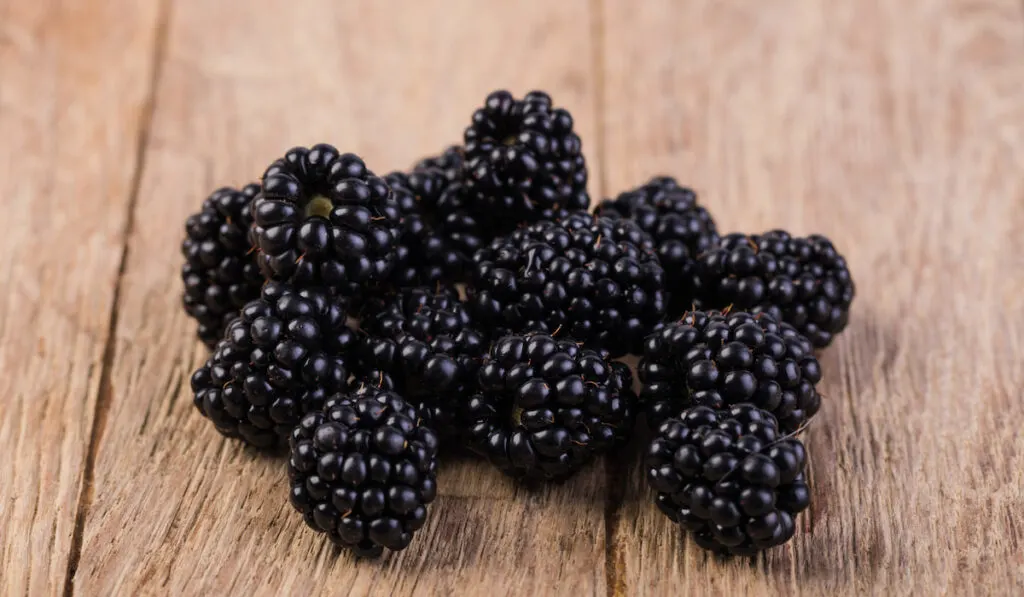
Blackberries’ origin is not known. These fruits may have been discovered in North Asia, South America, and/or Europe. These berries are now popular across the world and are used in many dishes, commonly baking.
Peacocks enjoy blackberries as they are small, have a sweet and tangy flavor, and are small enough to eat whole, or cut up into pieces.
These berries provide excellent health benefits for the consumer and are a fun and colorful way to spice up your peacock’s diet. Some health benefits of these berries include fiber, vitamin C, and many antioxidants.
Peaches

Peaches originated in China. Originally used for a sweet decadent treat after dinner, they may have also been used for certain medicines, hundreds of years ago. Peaches grow on trees and have a sweet and sometimes sour taste.
These fruits are tasty and easy to contribute to your peacocks’ diet.
Peacocks will also enjoy the various health benefits that are accompanied by eating a peach. Some of these benefits include vitamin C, many antioxidants, and may even fight certain cancers.
Special Note
The information above is not a suitable replacement for medical advice. If you believe your peacock is feeling unwell or showing abnormal symptoms, it is important to call your veterinarian immediately to ensure the health and safety of your peacock.
In addition, when giving these foods to your colorful friend, make sure you are doing so in moderation to avoid overeating.
Resources
- https://animals.mom.com/what-kinds-of-foods-are-recommended-to-feed-peacocks-4715944.html
- https://www.fao.org/quinoa-2013/what-is-quinoa/origin-and-history/en/?no_mobile=1
- https://www.red-raspberry.org/history
- https://www.theatlantic.com/science/archive/2017/05/rice-domestication/528288/
- https://link.springer.com/10.1007%2F978-1-4419-0465-2_2178
- https://en.wikipedia.org/wiki/Barley
- https://www.britannica.com/plant/rye
- https://themom100.com/recipe/how-to-cook-perfect-millet-on-the-stove/
- https://www.britannica.com/plant/corn-plant
- http://www.historyofbread.com/bread-history/history-of-wheat/
- http://www.vegetablefacts.net/vegetable-history/history-of-beans/
- https://drive.google.com/file/d/1zFRQZexeMXYjWxdcg3RBS5xPgq2b07TT/view
- https://www.britannica.com/plant/peach
